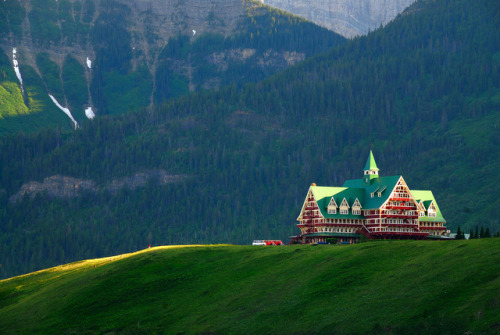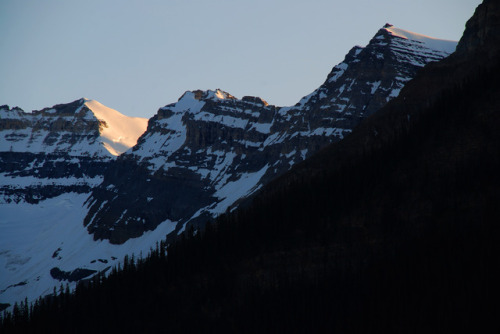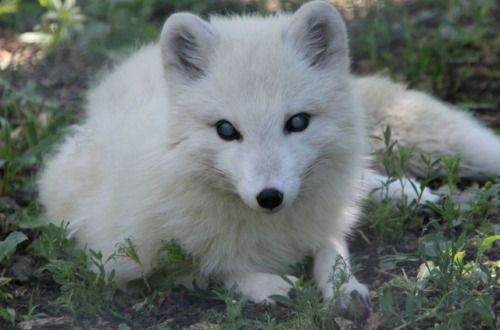Spinatlasagne-blog - Spinatlasagne

More Posts from Spinatlasagne-blog and Others

(◠‿◠)つ
Photo by Pim Leijen










Canadian Rockies by Gord McKenna

“Hub” by Amaury Bündgen.

ART: “Early Morning” by Jan van de Klooster

ART: “Opposing Forces” by Patrick Turner


*Takes Soul*
Photo by Winnerslens31
Spontaneous 'dust traps:' Astronomers discover a missing link in planet formation
Planets are thought to form in the disks of dust and gas found around young stars. But astronomers have struggled to assemble a complete theory of their origin that explains how the initial dust develops into planetary systems. A French-UK-Australian team now think they have the answer, with their simulations showing the formation of ‘dust traps’ where pebble-sized fragments collect and stick together, to grow into the building blocks of planets. They publish their results in Monthly Notices of the Royal Astronomical Society.

Our Solar system, and other planetary systems, began life with disks of gas and dust grains around a young star. The processes that convert these tiny grains, each a few millionths of a metre (a micron) across, into aggregates a few centimetres in size, and the mechanism for making kilometre-sized 'planetesimals’ into planetary cores, are both well understood.
Keep reading

Cloud by Wanderer
-
 radulfr96 reblogged this · 7 years ago
radulfr96 reblogged this · 7 years ago -
 dan-lee99 liked this · 8 years ago
dan-lee99 liked this · 8 years ago -
 penscopio reblogged this · 8 years ago
penscopio reblogged this · 8 years ago -
 neon-nips liked this · 8 years ago
neon-nips liked this · 8 years ago -
 mrrose liked this · 8 years ago
mrrose liked this · 8 years ago -
 the-binary-tomorrow liked this · 8 years ago
the-binary-tomorrow liked this · 8 years ago -
 spinatlasagne-blog reblogged this · 8 years ago
spinatlasagne-blog reblogged this · 8 years ago -
 camf825 reblogged this · 8 years ago
camf825 reblogged this · 8 years ago -
 ouhtouh liked this · 8 years ago
ouhtouh liked this · 8 years ago -
 kaktos1 reblogged this · 8 years ago
kaktos1 reblogged this · 8 years ago -
 kaktos1 liked this · 8 years ago
kaktos1 liked this · 8 years ago -
 lolalupu-blog reblogged this · 8 years ago
lolalupu-blog reblogged this · 8 years ago -
 aaaaasddffffffasxxxxddd reblogged this · 8 years ago
aaaaasddffffffasxxxxddd reblogged this · 8 years ago -
 aaaaasddffffffasxxxxddd liked this · 8 years ago
aaaaasddffffffasxxxxddd liked this · 8 years ago -
 lordmopie liked this · 8 years ago
lordmopie liked this · 8 years ago -
 unwoundandrewoundagain liked this · 8 years ago
unwoundandrewoundagain liked this · 8 years ago -
 xtal-1990 reblogged this · 8 years ago
xtal-1990 reblogged this · 8 years ago -
 trappetripelkenobi reblogged this · 8 years ago
trappetripelkenobi reblogged this · 8 years ago -
 geomsf liked this · 8 years ago
geomsf liked this · 8 years ago -
 unidentified-flavourful-object reblogged this · 8 years ago
unidentified-flavourful-object reblogged this · 8 years ago -
 unidentified-flavourful-object liked this · 8 years ago
unidentified-flavourful-object liked this · 8 years ago -
 coorier liked this · 8 years ago
coorier liked this · 8 years ago -
 admmastter liked this · 8 years ago
admmastter liked this · 8 years ago -
 icypher reblogged this · 8 years ago
icypher reblogged this · 8 years ago -
 belafonten reblogged this · 8 years ago
belafonten reblogged this · 8 years ago -
 stigaishi liked this · 8 years ago
stigaishi liked this · 8 years ago -
 civilizationfiction liked this · 8 years ago
civilizationfiction liked this · 8 years ago -
 master-da liked this · 8 years ago
master-da liked this · 8 years ago -
 olderlyish liked this · 8 years ago
olderlyish liked this · 8 years ago -
 wine-dark-sea liked this · 8 years ago
wine-dark-sea liked this · 8 years ago -
 shiroi-karasu liked this · 8 years ago
shiroi-karasu liked this · 8 years ago -
 evelynstormrose liked this · 8 years ago
evelynstormrose liked this · 8 years ago -
 j1gg4mus reblogged this · 8 years ago
j1gg4mus reblogged this · 8 years ago -
 wavy-k liked this · 8 years ago
wavy-k liked this · 8 years ago -
 dreamcafunedream reblogged this · 8 years ago
dreamcafunedream reblogged this · 8 years ago -
 leftybear liked this · 8 years ago
leftybear liked this · 8 years ago -
 faeryclown reblogged this · 8 years ago
faeryclown reblogged this · 8 years ago -
 violet---violence reblogged this · 8 years ago
violet---violence reblogged this · 8 years ago -
 violet---violence liked this · 8 years ago
violet---violence liked this · 8 years ago -
 ikumi-roronoa liked this · 8 years ago
ikumi-roronoa liked this · 8 years ago -
 gr44w liked this · 8 years ago
gr44w liked this · 8 years ago -
 gr44w reblogged this · 8 years ago
gr44w reblogged this · 8 years ago -
 majikalconcepts liked this · 8 years ago
majikalconcepts liked this · 8 years ago -
 brightmane57 reblogged this · 8 years ago
brightmane57 reblogged this · 8 years ago -
 brightmane57 liked this · 8 years ago
brightmane57 liked this · 8 years ago
